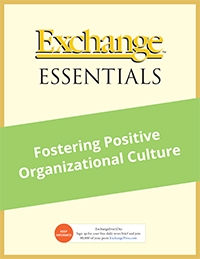ExchangeEveryDay Past Issues
 << Previous Issue
| View Past Issues | | Next Issue >>
<< Previous Issue
| View Past Issues | | Next Issue >> -Norman Podhoretz
“Anti-bias education cannot be mastered in a one-time workshop or by reading a book,” write Louise Derman-Sparks, Debbie LeeKeenan, and John Nimmo in Leading Anti-Bias Early Childhood Education Programs: A Guide for Change. “Most teachers largely learn how to do anti-bias education on the job, in specific settings with specific children and families. Anti-bias leaders provide the necessary time, space, resources, support, and facilitation for teachers and other staff to be part of the process of change...Anti-bias work grows best in an environment where collegial, mutually respectful relationships among staff and between staff and the program leader are the norm and where a culture exists that fosters open conversation and dialogue, reflection, and risk taking.”
In the new Exchange Essentials resource article collection - Anti-Bias - one of the authors, anti-bias teacher Anita Howard, begins her article with this powerful quote from Eleanor Roosevelt:
“Where, after all, do universal human rights begin? In small places, close to home — so close and so small that they cannot be seen on any maps of the world. Yet they are the world of the individual person; the neighborhood he lives in; the school or college he attends; the factory, farm, or office where he works. Such are the places where every man, woman, and child seeks equal justice, equal opportunity, equal dignity without discrimination. Unless these rights have meaning there, they have little meaning anywhere. Without concerted citizen action to uphold them close to home, we shall look in vain for progress in the larger world.”
 |
In our large collection of Exchange Essentials article collections, find resources on subjects such as administration, child development, curriculum, environments, family, and leadership. |
|
Offer valid through April 15, 2022, at 11:59 pm Pacific Time. |





Post a Comment